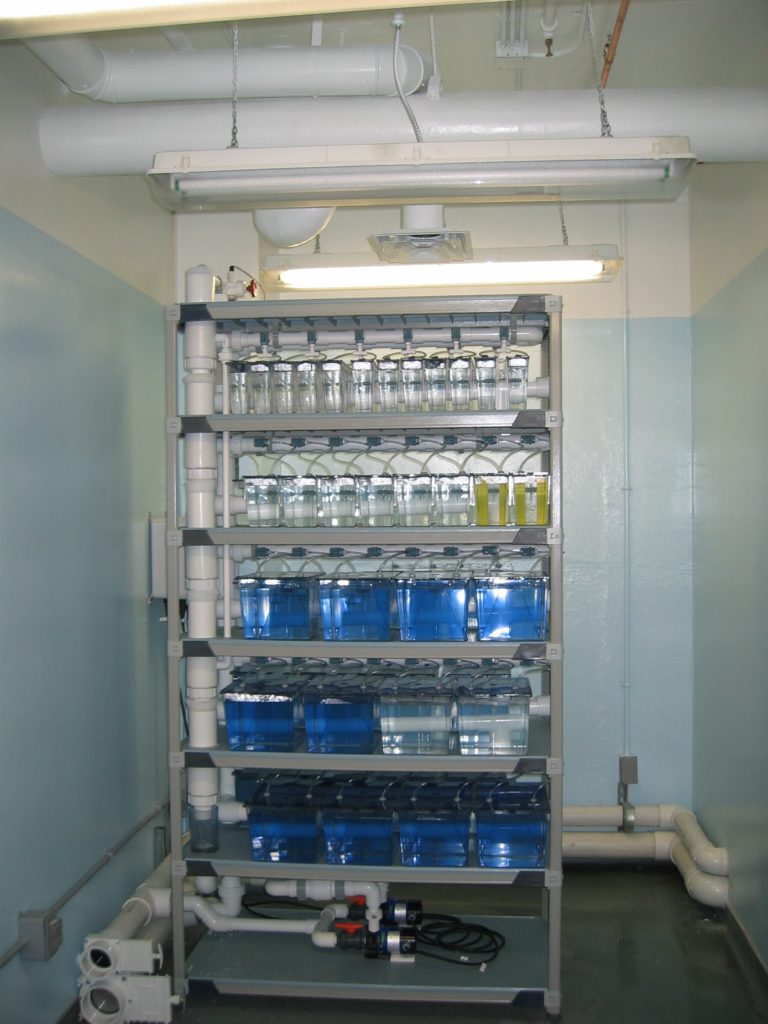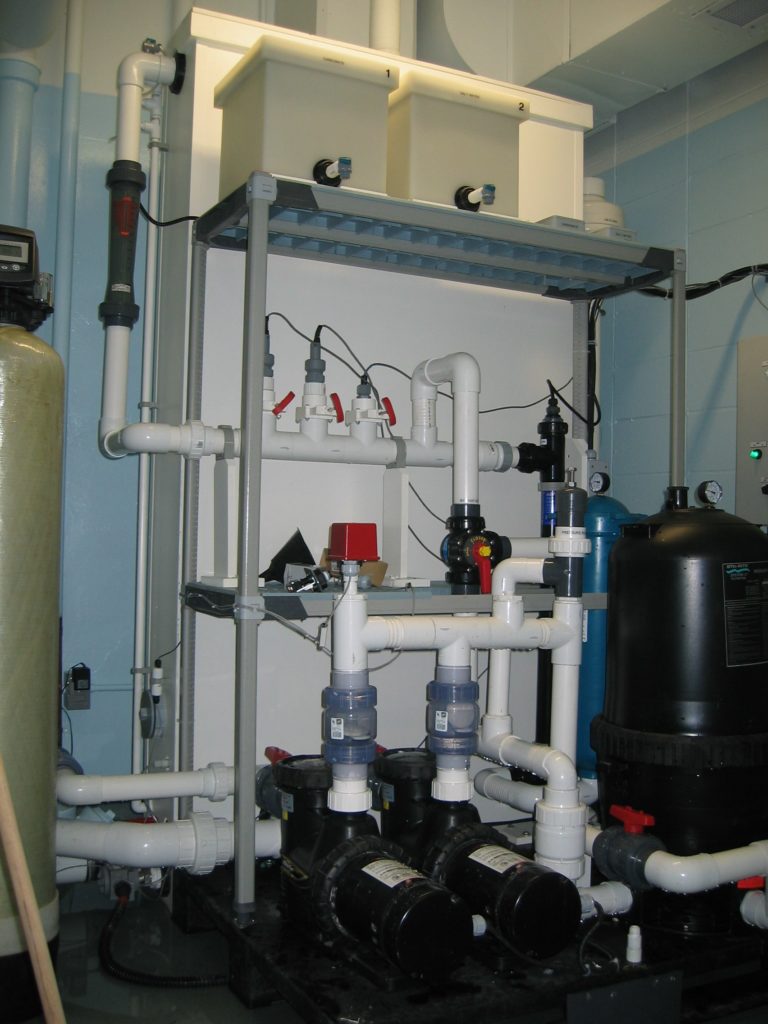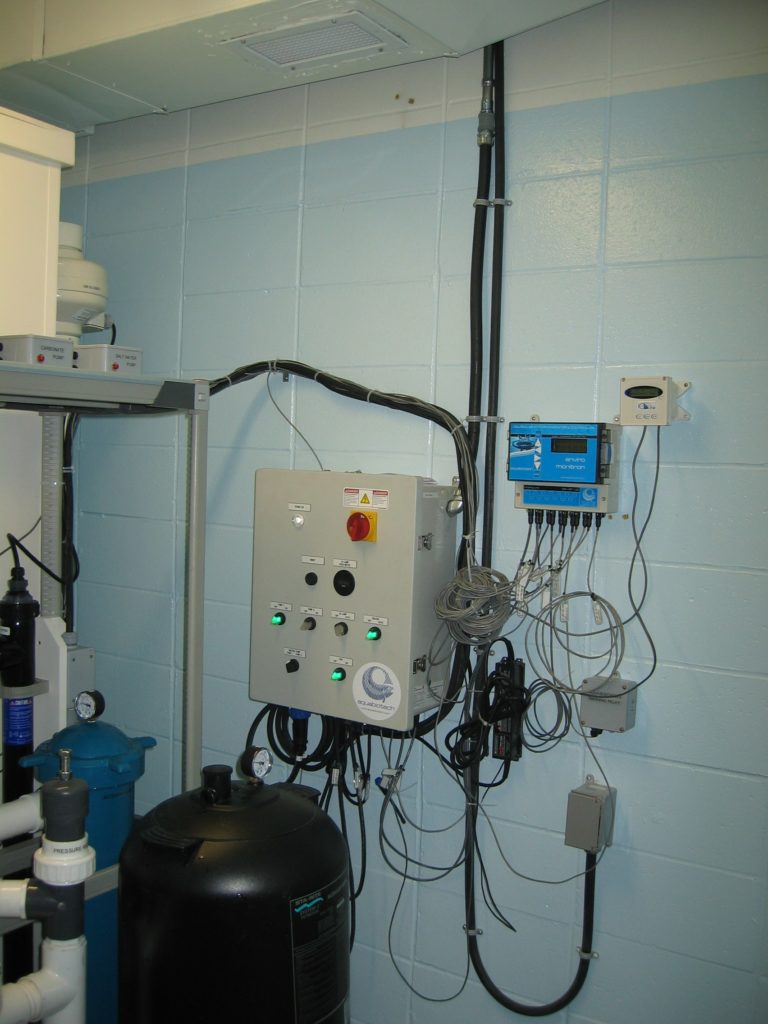Dalhousie University – Zebrafish System
Dalhousie University – Zebrafish System
| Institution: |  |
| Location: | Halifax, Nova Scotia, CANADA |
| Contact: | Dr. Allen Fine |
| Habitat: | Freshwater |
| Type of unit: | Dalhousie University – Zebrafish system with central filtration module. |
| Unit description: |
|
| Mandate: |
|
Dalhousie University – Zebrafish System: Flow circulation
The water flow through the filtration module is divided into two pressurized-fed circuits. From the sump tank, the water flows into this two circuits. First circuit directs the water through the cartridge filter / biofilter / degassing column; while the second directs the flow through the rearing tanks.
First Circuit
From the sump tank, the water is pumped through the 20 microns cartridge filter and the activated carbon filter. A pressure relief valve allows the cartridge filter to be bypassed if necessary (for repairs or cleaning). From the activated carbon filter, the water flow through UV terilizer. A three-way valve allows the activated carbon filter and the UV sterilizer to be bypassed if necessary (for repairs or cleaning). From the UV, the water flow through the biofilter.
Second Circuit
From the sump tank, the water is pumped through each rearing tanks (double-sided racks).
A peristaltic pump allows the quantity of fresh make-up water to be precisely regulated. This pump is controlled by the Enviro-monitron. The pump is capable of introducing up to 60% of the total volume of the system per day (one filtration module & 8 double-sided rack). The effluent leaves the system through the peristaltic pump (or by the system overflow located in the sump tank). Make-up water enters in the system via a float valve. This float automatically maintains the water level under the system overflow.
Third Circuit
The water coming from the filtration module, is pumped through the first overflow tank located on the top shelf, subsequently the water overflows in series in each of the other overflow tank. Each of these
overflow tanks then supplies its shelf of five rearing tanks. The effluent from each of the rearing tanks flows along a gutter and then into a pipe which leads it to join the other circuit at the entrance to the sump tank of the filtration module.





